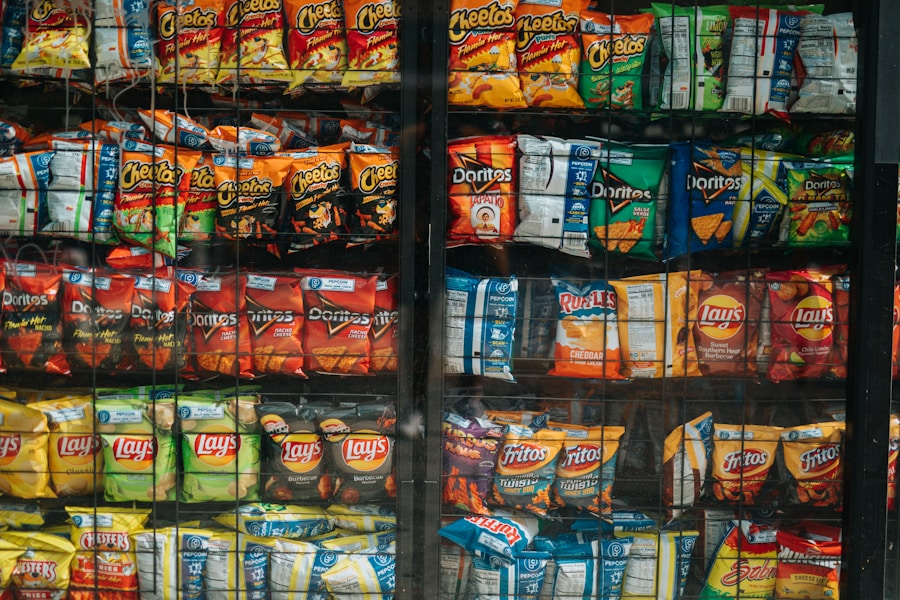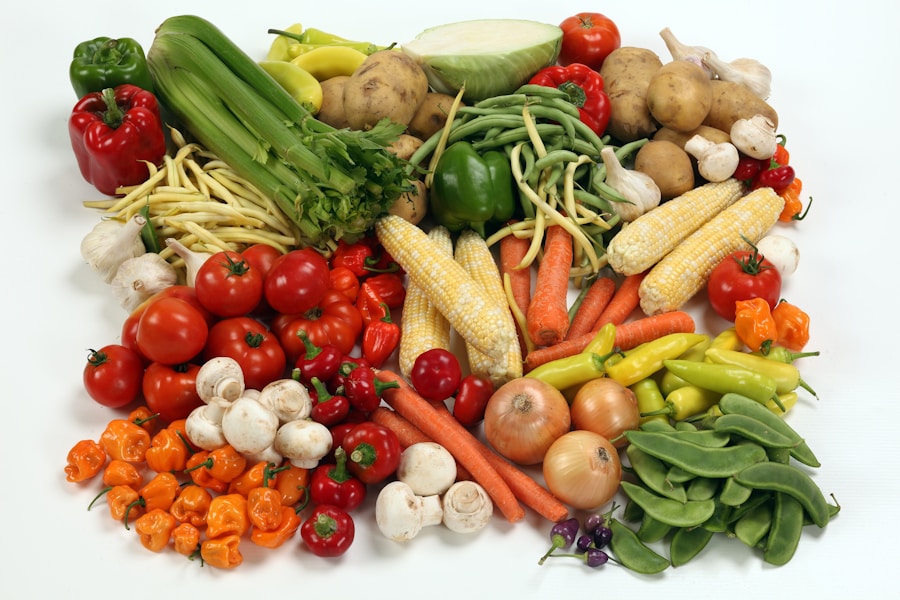Cats are obligate carnivores, which means they require a diet primarily made up of animal-based proteins. Unlike omnivores, such as dogs and humans, cats have specific nutritional requirements that can only be met through a diet rich in meat. Protein is essential for cats as it provides the necessary amino acids for muscle maintenance, growth, and overall health.
Additionally, cats require certain vitamins and minerals, such as taurine, vitamin A, and arachidonic acid, which are found naturally in animal tissues. Understanding these unique nutritional needs is crucial when selecting the best food for your feline friend. In addition to protein, cats also need a moderate amount of fat in their diet for energy and to support healthy skin and coat.
Essential fatty acids, such as omega-3 and omega-6, play a vital role in maintaining a cat’s overall health. Carbohydrates are not a necessary component of a cat’s diet, as they can obtain energy from proteins and fats. However, some commercial cat foods may contain carbohydrates as fillers, so it’s important to consider the source and quantity of carbohydrates in your cat’s food.
Key Takeaways
- Understanding your cat’s nutritional needs is crucial for choosing the best cat food.
- When decoding cat food labels, look for high-quality ingredients and avoid fillers and by-products.
- Wet cat food provides more moisture, while dry cat food can help with dental health.
- Cats with health issues may require special dietary considerations, so consult with a veterinarian.
- Monitoring your cat’s health and wellbeing through their diet is essential for their overall wellness.
Decoding Cat Food Labels: What to Look For
Identifying High-Quality Ingredients
The first ingredient listed on the label is the most abundant in the food, so it’s crucial to look for high-quality animal protein sources, such as chicken, turkey, or fish. Avoid foods with vague or generic terms like “meat by-products” or “animal digest,” as these may not provide the necessary nutrients your cat needs.
Guaranteed Analysis: Uncovering Nutritional Content
Check for the guaranteed analysis on the label, which provides information on the minimum percentages of crude protein and fat, as well as the maximum percentages of crude fiber and moisture. This can give you insight into the nutritional content of the food. Look for complete and balanced formulas that meet the Association of American Feed Control Officials (AAFCO) standards for cat nutrition.
Making Informed Decisions for Your Cat’s Health
Understanding how to read and interpret cat food labels can help you make informed decisions about your cat’s diet and ensure they receive the essential nutrients they need to thrive.
When it comes to choosing between wet and dry cat food, there are various factors to consider. Wet cat food typically has a higher moisture content, which can help keep cats hydrated, especially if they have a low water intake. The increased moisture content in wet food can also be beneficial for cats with urinary tract issues or kidney disease.
Additionally, many cats find wet food more palatable due to its texture and aroma. On the other hand, dry cat food is convenient and has a longer shelf life compared to wet food. It can also help maintain dental health by promoting chewing and reducing plaque buildup.
Dry food is often more cost-effective and can be left out for free-feeding without spoiling quickly. However, some cats may not consume enough water when eating dry food, which could lead to dehydration or urinary issues. Ultimately, the decision between wet and dry cat food depends on your cat’s individual needs and preferences.
Some cat owners choose to offer a combination of both wet and dry food to provide variety and ensure their cat receives adequate nutrition.
Special Dietary Considerations for Cats with Health Issues
Cats with specific health issues may require special dietary considerations to support their well-being. For example, cats with diabetes may benefit from a high-protein, low-carbohydrate diet to help regulate blood sugar levels. Cats with kidney disease may require a diet with restricted phosphorus levels to reduce strain on the kidneys.
It’s essential to work closely with your veterinarian to determine the best dietary plan for your cat’s specific health condition. In some cases, specialized prescription diets may be recommended to manage certain health issues. These diets are formulated to support cats with conditions such as urinary tract disease, gastrointestinal disorders, or allergies.
Prescription diets are designed to provide targeted nutrition to address specific health concerns and should be used under the guidance of a veterinarian. Understanding your cat’s individual health needs and working with a veterinary professional can help ensure they receive the appropriate dietary support to manage their health conditions effectively.
The Importance of High-Quality Ingredients in Cat Food
| Category | Importance |
|---|---|
| Nutritional Value | High-quality ingredients provide essential nutrients for a cat’s overall health and well-being. |
| Digestibility | Quality ingredients are easier for cats to digest, reducing the risk of digestive issues. |
| Taste and Palatability | High-quality ingredients enhance the flavor and appeal of cat food, encouraging cats to eat and enjoy their meals. |
| Health and Longevity | Quality ingredients support a cat’s immune system, promote healthy weight management, and contribute to a longer, healthier life. |
High-quality ingredients are essential for providing optimal nutrition and supporting your cat’s overall health. Look for cat foods that list real meat as the primary ingredient, such as chicken, turkey, or fish. Avoid foods that contain excessive fillers, artificial preservatives, colors, or flavors.
Natural preservatives like tocopherols (vitamin E) are preferable over synthetic preservatives like BHA or BHT. Additionally, consider the source of the ingredients used in your cat’s food. High-quality cat foods often use human-grade ingredients sourced from reputable suppliers.
Avoid foods that contain ambiguous terms like “meat by-products” or “animal digest,” as these may not meet the same standards for quality and nutrition. By choosing cat foods with high-quality ingredients, you can provide your feline friend with the essential nutrients they need to thrive and maintain their overall well-being.
How to Transition Your Cat to a New Food
When transitioning your cat to a new food, it’s essential to do so gradually to avoid digestive upset. Start by mixing a small amount of the new food with their current food and gradually increase the proportion of the new food over several days or weeks. This slow transition allows your cat’s digestive system to adjust to the new diet without causing gastrointestinal issues.
Keep an eye on your cat’s behavior and stool during the transition period. If you notice any signs of digestive upset, such as vomiting or diarrhea, slow down the transition process or consult with your veterinarian for guidance. It’s important to be patient during the transition period and allow your cat time to adjust to the new food.
By taking a gradual approach, you can help minimize any potential digestive disturbances and ensure a smooth transition to their new diet.
The debate between homemade and commercial cat food has been ongoing among pet owners and experts. Homemade cat food allows pet owners to have full control over the ingredients used and tailor the diet to their cat’s specific needs. However, creating a balanced homemade diet that meets all of a cat’s nutritional requirements can be challenging and requires careful planning and supervision by a veterinary nutritionist.
Commercial cat foods are formulated to meet AAFCO standards for complete and balanced nutrition, providing convenience and assurance that essential nutrients are included in the diet. Many high-quality commercial cat foods use premium ingredients and undergo rigorous testing to ensure safety and nutritional adequacy. Ultimately, both homemade and commercial cat foods can be suitable options depending on individual circumstances.
If considering homemade cat food, it’s crucial to work closely with a veterinary nutritionist to develop a balanced recipe that meets your cat’s specific nutritional needs.
Choosing the Right Cat Food for Different Life Stages
Cats have different nutritional requirements at various life stages, including kittenhood, adulthood, and senior years. Kittens require a diet that supports growth and development, with higher levels of protein, fat, vitamins, and minerals compared to adult cats. Look for kitten-specific formulas that are designed to meet the unique needs of growing kittens.
Adult cats benefit from a balanced diet that supports overall health and energy levels while maintaining an ideal body condition. Senior cats may require adjustments in their diet to accommodate changes in metabolism, activity levels, and potential age-related health concerns. When selecting cat food for different life stages, consider formulas specifically tailored to kittens, adults, or seniors to ensure your feline companion receives appropriate nutrition at each stage of their life.
Top Brands and Products for Cat Food
There are numerous reputable brands offering high-quality cat food options tailored to meet feline nutritional needs. Some well-regarded brands include Royal Canin, Hill’s Science Diet, Purina Pro Plan, Orijen, Acana, Wellness Core, Blue Buffalo, and Taste of the Wild. These brands offer a variety of formulas designed for different life stages, dietary preferences, and specific health concerns.
When choosing a cat food brand, consider factors such as ingredient quality, nutritional profile, reputation, and any specific dietary requirements your cat may have based on their health status or age. It’s essential to select a brand known for its commitment to quality and safety in producing nutritious cat food options.
Tips for Monitoring Your Cat’s Health and Wellbeing through Their Diet
Monitoring your cat’s health and wellbeing through their diet involves paying attention to various indicators of their overall condition. Keep an eye on their appetite, weight management, coat condition, energy levels, stool quality, and any changes in behavior or activity patterns. Regular veterinary check-ups can also provide valuable insight into your cat’s health status and whether their current diet is meeting their nutritional needs effectively.
If you notice any concerning changes in your cat’s health or behavior related to their diet, consult with your veterinarian for guidance on potential dietary adjustments or considerations. By staying attentive to your cat’s dietary habits and overall well-being, you can proactively address any potential issues related to their diet and ensure they maintain optimal health throughout their lives. In conclusion, understanding your cat’s nutritional needs is essential when selecting the best food for them.
Decoding cat food labels allows you to make informed choices based on ingredient quality and nutritional content. The decision between wet and dry cat food depends on individual preferences and health considerations. Cats with specific health issues may require specialized diets under veterinary guidance.
High-quality ingredients play a crucial role in supporting your cat’s overall health and well-being. Transitioning your cat to a new food should be done gradually to avoid digestive upset. The debate between homemade and commercial cat food depends on individual circumstances and should be approached with careful consideration.
Different life stages require tailored nutrition for kittens, adults, and seniors. Reputable brands offer a variety of high-quality cat food options designed to meet feline nutritional needs effectively. Monitoring your cat’s health through their diet involves paying attention to various indicators of their overall condition and seeking veterinary guidance when necessary.






